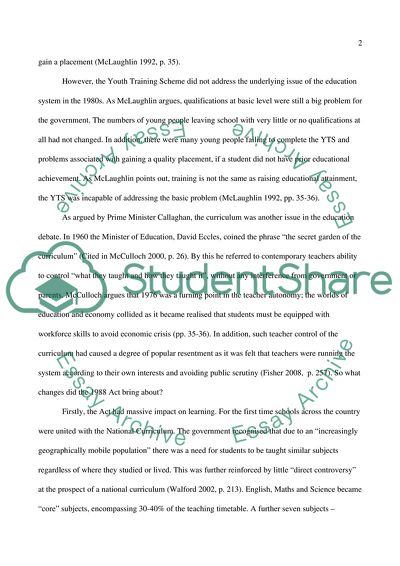Cite this document
(The 1988 Education Act Effects on State Schools Essay - 1, n.d.)
The 1988 Education Act Effects on State Schools Essay - 1. https://studentshare.org/education/1563676-describe-the-impact-the-1988-education-act-had-on-the-curriculum-and-assessments-in-state-schools-what-concerns-did-some-people-have-about-education-in-the-1980s-which-led-to-the-changes-proposed-in-the-act
The 1988 Education Act Effects on State Schools Essay - 1. https://studentshare.org/education/1563676-describe-the-impact-the-1988-education-act-had-on-the-curriculum-and-assessments-in-state-schools-what-concerns-did-some-people-have-about-education-in-the-1980s-which-led-to-the-changes-proposed-in-the-act
(The 1988 Education Act Effects on State Schools Essay - 1)
The 1988 Education Act Effects on State Schools Essay - 1. https://studentshare.org/education/1563676-describe-the-impact-the-1988-education-act-had-on-the-curriculum-and-assessments-in-state-schools-what-concerns-did-some-people-have-about-education-in-the-1980s-which-led-to-the-changes-proposed-in-the-act.
The 1988 Education Act Effects on State Schools Essay - 1. https://studentshare.org/education/1563676-describe-the-impact-the-1988-education-act-had-on-the-curriculum-and-assessments-in-state-schools-what-concerns-did-some-people-have-about-education-in-the-1980s-which-led-to-the-changes-proposed-in-the-act.
“The 1988 Education Act Effects on State Schools Essay - 1”. https://studentshare.org/education/1563676-describe-the-impact-the-1988-education-act-had-on-the-curriculum-and-assessments-in-state-schools-what-concerns-did-some-people-have-about-education-in-the-1980s-which-led-to-the-changes-proposed-in-the-act.


